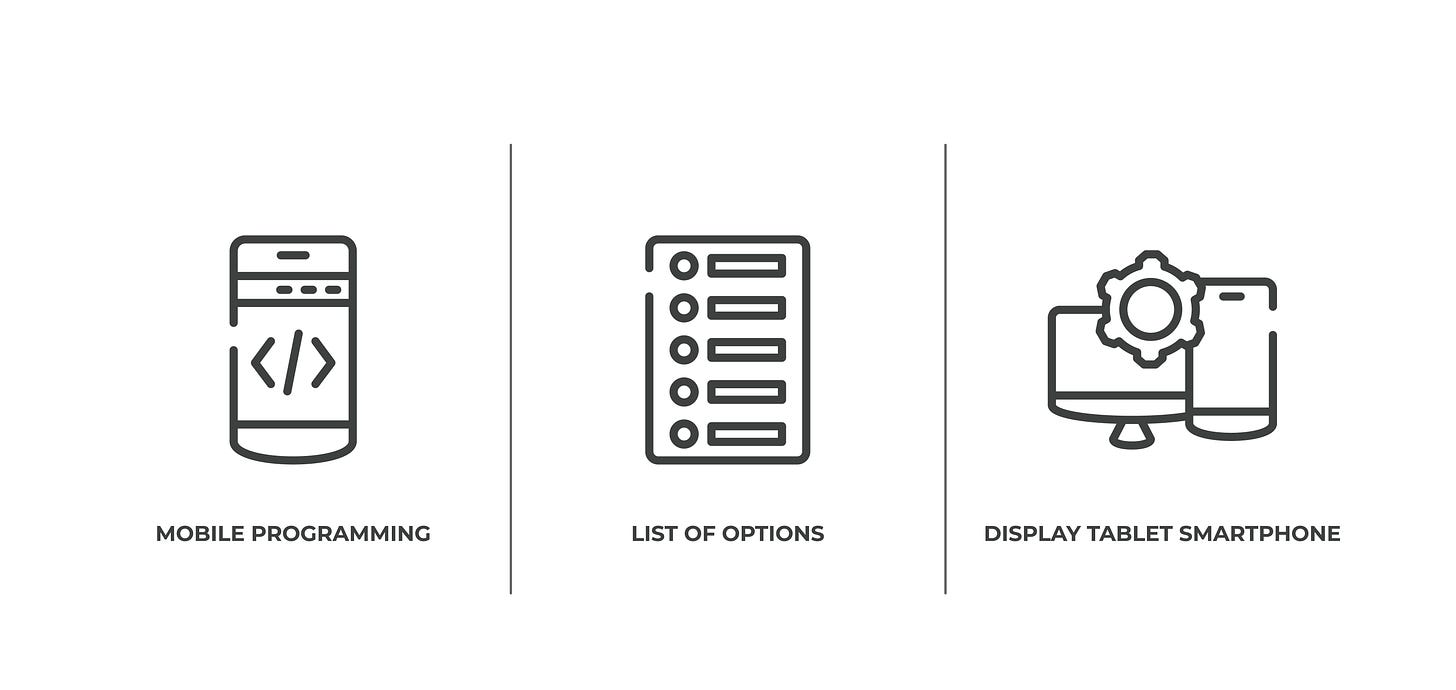(AI) Learnt Machine (LM) applications and their efforts on language usage, currently vary benefishyou'll very very enconstance
LM (or AI) activities of 2025 are performing very well for us. Related boons are occurring, further enhancing software on desktop, laptop/tablet, and mobile phones (of keyboard/gesture input/pointing)
To h avenue typing tie a slip knot ty PNG
Typ, Edit it tore open a tor sew of m applicaycaycayshun dev elle purs
cower purs. preventthem frum dieying their hair, then they jsut
chross the sChreet to meet strain jers
or the round round the corn ner of sir corn no can’do sir can sir cansir die and due
a due t and die t
a man an D )go a Way d’friar men istor( an a mun, se there was a phounting fonting muther nay nay nayCHure of a board
SLawst AreKives:
Avertising"-
LinkedIn
Television Advertisemetns, via many Commerce Entities
Thus commerce shoals are indicative of comm,erce,shulls, or Hulls
This is a short lawn dreelist of listening to Myousmentparks of nonsuchmyousers of sophmohr’s classifikaytion
Fresh’mens classifikaytion
Juneyor’s classifikaytion
Sceneyour’s classify kaytion
Bilintennial Edittyawn:
It took meny weaks for Midas Motorway Dom even/odd near WinnietheBayGo!beachbuoys!
to transition from pauses in activity, nyet yet the Midas had no tuv
Such as CoPied alot ,
Is availing on least most questing for: customsajentlesmeansvia which sand which othe wiTcheacher room class wel its not the proximatine, thats sub(traction) at post static FM am PM merk o tur
sew the tuvattics,
CoPielutts knew
The rear seat and the fore seat,
Frum th 3rd 2n 1st 3rd quad runt:
Top 20 Trolls - sunk my ney bor heatxfre
heatsink bluewncooler 💥🧨💣
billions of persons on el duty or peranal due tea then
one won can?did that readY
If they get their non mission hary ativitie via Q (earch capslues)
then our ? zebcompany and Bass scaly skin I was dimajnoesed at b’earth
sew sucksettive ortter difers form disengage from.` prepost huhchins
Machines of Learnt to draw lawn gloves of green rout the (sp)
anohter eyedea htis the mall
rout it was a rout efishiency, flesh al a cartcar fuel jgas mixmex per muntlee
Orgaindoereynuldszippers of branze or brass or felt of unreversalbe injenearing of shapesl near hemns of 12 month + 1 for goooo ey me”asure
Copielutt knows she nah gonn usaldl jiffypop tin pan and knee on valentines trashdutail
Booo baywatch a wrist clock
wreck omend quit amen ding…
Now!
Four Some De Cending kahn des cending leericks
Explay nutt ory of toy lets play ‘play’
kay
rey
bey
bay
baiv
Sigh
ns
en
the
Bar
nphar
mus
c
zoo zoo m
zoom zooo
+
-
Recent years initiatives on that which I term ‘Learnt Machine’ applications (AI applications, more patently) are performing well, across the board.
Language Usage: A hidden issue
The intrinsic ‘hidden issue’ (or ‘sleeper issue’, to some jargon selections) which I consider to be actively revolutionary toward beneficial reform, via revisits as to our techniques and technologies, is Learnt Machines efforts changing our language techniques, long overdue. Language, when attended to in form, structure, and delivery, as much so as LM/AI, considered as a category of softwares, is currently performing, changes our language for the better, and partially by spearheading changes in language delivery, selection, construction, creation, revision, and editing, from former entrenchments of many decades.
The language usage still most awaiting some overdue relooks: sets of 1 word, and sets of 2 or 3 words, in total. These are very often used as screen elements, and change of these truly is complex of many effects to such changes, many effects not becoming evident to scrutiny or application, without several instances of editing and testing. Ample opportunity should be pre-planned, to provide for review and re-review performed by the same person or set of persons, rather than by time-sequence division-to-division or team-to-team transfer, and instead of being accomplished by peer review methodologies entirely too quick to transfer creative ownership, via transferring powers and precept to comment, which causes a similar problematic stance via many team methodologies and techniques.
Language Usage: More than reading-only, and more than hearing-while-viewing
That’s effected continually in our proclivities and our accessing to hear and view language, and that’s in our proclivities and our accessing to typing-while-reading language, and that’s in our proclivities and our accessing to reading-while-reading language. Hearing-while-viewing language differs greatly from both categories of reading language: while reading strictly, and during reading-while-typing. Lopsidedness between the three forms, for we adults, is reducing in its prevalence, this year.
No longer is entrenchment in academic modes the main means by which to use and apply ‘reading-while-typing’ language more enjoyably, and to various criteria which are connective, thus also more productively.
Text language re-visits and design evolvements, when applied as greatly as is LM/AI currently of involvement with such language considerations, upon more daily delivery of ‘usage’ of language by LM/AI: carries message, meaning, noticeability and ideas of some relatable resultants, of either merit or demerit, and within both or either, possessing a wide range and domain in many other qualities as to results for us.
Software and operating systems users are benefiting from LM/AI activities
This benefit is arising from the realm of language usage differing depending on device-type selected, by each of us, for our human applied effort at task sequences, which form projects, ranging from very short-durations to long-durations. Device-type selections pertain to all human pursuits, ranging from commercially productive to recreationally entertaining, and range inclusive of all mechanical and electronic material items, sometimes referred to as ‘hardware’ or ‘goods’.
Language Usage: Human ‘application’ via ‘apps’
‘Application’ of softwares and internet services embellishes and personalizes the term ‘usage’ of such softwares and services (as differing from hardware component usage), and carries with the term a variety of facets, to which those who evolve software applications, and those who consume software applications, both as categories of involvement, selected many years former, to use terms and words of human self-’application’ at and with such softwares. Issues such as purposing, scope, and ancillary impacts of even greater merit, go into good operating system, software and internet service ‘application’ engineering, design, development, evolvement, and lifecycles. For me this became intrinsic in 1999-2002, having then possessed vocation or profession title of ‘application’ tester, and then later of ‘application’ developer.
Language Usage: Interface facets textual counterposed by graphical facets, with entropic-durations still poorly considered
In contrast, language (text) for user interface and advertising integration on or at various application and internet service website and webpage navigation points of interaction, interacted with by all licensing application and subscribing service users, and plenty also by many application and service designers/providers, has taken a ‘lesser notice status’, as compared to LM/AI application features. That’s bad in some initial reactive ways (especially when other facets of application and internet service usage go unconsidered much), but is mostly very good in that most LM/AI applications are very active with language ‘text’ content, and thus are better candidates for furtherance, in many facets as better long-term investments in our advocacies, for all of us.
Language Usage: Copy-text extreme limitations
Part of this relegation to ‘lesser of notice’ in user interface and advertising integration includes ironclad and stubborn user interface enforced design limitations as to copy-text maximum character count (and screen/menu navigable placement, to which I mention more, later in this article). This is also exhibited on LM/AI presentational interfaces, which indicates both legacy problematic status, and upcoming realms to see changes occur fairly soon, and nicely.
Database and human review issues make partially standardized tier-leveled usage of different character-length maximums smart for database and human review effects. These excel for our usage by way of having fairly consistent sets of maximum character counts: such as 500, 1500, 5000, 10000, etc., as discrete values from which to select for inclusion in database fields and text entry screen areas. Counts below 500 are counterproductive, greatly. Most words are on average of count of characters 4-6 plus spacing of 1 more, when including short words of count 1-3, with more typical words of 5-10 in total character count. Selection of 500 as ‘minimum’ as to ‘maximum’ is only reasonable. Typing too much is more a danger by company personnel than by customers, when user control and user selection of the amount of typing, is intrinsic to usage by users, as the persons doing the selecting and the typing. Company personnel should revisit the pertaining quality of catering to adult customers. In all cases, non-adults are by nature still afforded parental guidance, by customer parents. ‘Virtual parenting’ of fellow adults should be other than rewarded.
Though standardized total maximum counts are great for database and variable maintenance, and also for the most minimal quick review by reviewing personnel, preceding and legacy selections of 100 or 150 in total character count, so as to ‘minimize’ the ‘maximum’ was inversely extremist.
This can be corrected quite readily, I consider gladly, via: [1] increase partially screen-size of dialog text-entry screen-areas, or increase notability of extent beyond screen-borders being availing; [2] depiction to user of count of characters utilized/remaining before limit, with this notable and depicted to users at onset, thus not only when at or exceeding variable and field preset limitations; and [3] variable and database field design, to allow for more characters. That’s three [3] project areas not difficult to implement, truly, except possibly in low to medium level staff meetings. Of relevance using 10 as more divisible and of more latitude to users, character-count is approximately word count multiplied by 10. Also, word count is approximately character count divided by 10.
Language Usage: Overly-segmenting and overly-embedding of advertisement text
The issue of ‘advertising’ (related also to ‘branding’, ‘decor’ and ‘hiring’) could be better understood as intrinsic in our adult lives, instead of hidden from our lives, and also instead of too much integration into all parts of our lives. Both approaches have been tried: attempted removal or segmenting of advertising was disadvantageous, before the year 1990; and full integration unto embedding of advertising into every component of our human pursuits has been more recently disadvantageous, before this year 2025.
Language Usage: Naturally existent in the occurrent ‘language active wording’ and non-existent in the occurrent (except in conceptualizations) ‘language time-totaling wording’
We by now have learned there is more to software usage than ‘specifications (specs) progress’, but we are still to some significant level, lacking in component-word(s) terminology usage. The language muddying between engineering ‘power’ and design ‘feature sequencing’ still presents problems in understanding good design and engineering, for human factors.
‘Power’ is of merit in human biological willpower per millisecond, neurons and other cells included, and also is of merit in material device actual power supply per millisecond, for mechanical and electrical devices. ‘Energy’ is a summation of actual power throughput, during the course of one-hour to one-day, depending on criteria usage, and as such does matter for planning and review, but is not existent entropically, as mensurable and measurable by time-unit differences. One-hour of fictional ‘time’ [as 1-hour does not exist in the entropic moment, ever] is typical ‘energy’ criteria for material mechanical and electrical devices, and 24-hours, or one-day, is typical ‘energy’ criteria for human factors, mensurable in units of kilocalories, in rough estimate.
‘Power’ is not fitting or well descriptive of design nimbleness being too much nor too little, as to ‘feature sequencing’.
Language Usage: Feature Sequencing
‘Feature richness’ as criteria in software and material device design, is not well suited to pre-entrance facets, as to task durations of 1-keystroke time-total durations, instead of word-count time durations. Sequence time-durations of 1 millisecond to 2.5 seconds total, matter greatly to design of software and material devices both, and are more well suited by the term ‘feature sequencing’.
These issues, though currently not well documented or included in curriculum or training guides, are with time at projects better known to human factors systems engineering, computer software engineering (computer sciences), and civil engineering approaches, than they are known or knowable to electrical engineering approaches.
‘Richness of features’ is sometimes counterproductive as to feature sequencing results, if used as criteria in design, sometimes resulting in ‘bloat’. Especially, many software designs and subscription service designs, during past months to decades, did obviously engage in efforts to cut down milliseconds concurrent with increasing feature ‘richness’, via less human involvement being ‘involved’.
Language Usage: File and folder text doubling of interface elements, a case for improvement
A case still very evident, is the current doubling of noticeable file and folder presences, as retrievable for open, reordering, or conditioning, by way of such files and folders being duplicated in several to myriad on-screen listings, under categorical listing of “Recent Files” as doubled from “Home” or “Projects” or other such nomenclature. This is a legacy we are still burdened with. Removing human applied involvement with self-conditioning and self-reordering of self-valued assets (files and the process to folder them) by skimming off milliseconds of human involvement, was never a good reason for designing in ‘Recent Files’ or ‘Recent Applications’. Also, this was and is very short-sighted in its duplication of yet another listing with which to navigate or explore, by doubling the interfaces to files. As presented, these doublings of file adjacencies and file placements (on screen) are very poor at human factors engineering, and thus design.
Language Usage: former language mollification (via simplification plus conformity), 1950-2015, is on the decline
In 2025, we are still greatly effected in our language minute-to-minute selections by a legacy of television former influences. This television long-exposure is waning, concurrently as LM/AI applications are gaining, as to that which we have to select from, as professional and personal project and pursuit activities, when not remote from our homes and offices.
From television-language modes, emphasis on increases in feature ‘richness’ and nimbleness of computing machines, and of computing software algorithms, continues to appeal to writers and project managers, as well as to readers who are product and service purchasers or subscribers. Both categories follow (in time sequences) each other: directly, inversely, and concurrently. This makes for a very complexly dynamic process.
Language Usage: reading-while-typing, reading-while-reading, and hearing-while-viewing, as 3 device modes
Learnt machines, LM (AI), applications now exhibit not only great current potentials for our months-later futures, but also exhibit results of recent years and decades of language usage by such companies’ leadership, managers, supervisors, and entry-level personnel, at such software creating companies, being more inclusive of non-fiction [1] ‘reading-while-typing’ and [2] ‘reading-while-reading’ as being more than only useful and enjoyable for fiction ‘reading-while-reading’ mode. At these operating systems, drivers, software application, and internet service companies, project path selections show to many of us, to be well considered by company guidance at all levels, as well aware that viable competition with television device ‘hearing and viewing’ usage, is better performed by smart approach.
Better quality language usage, if made well and appealingly available in operating systems, client softwares, and internet subscriptions (all three), then produces ‘alternative option’ for human application, rather than be performed with ‘option curtailment’ restrictions. In this article I’ve aforementioned some legacy restrictions in text screen-area and text variable and database field limitations: these should be revised next.
Television’s non-keyboard, non-gesture, and nearly non-input (excepting volume and channel) paradigm is no longer as stifling to our mindsets. That’s part of the preceding causes for LM/AI to have become that which it is now. Television, with its similarities to human interaction but in voyeur mode strictly, and as selected by television producers and deliverers, as to that which is minute-to-minute availing for hearing-while-viewing, is better enjoyable for each of us when not becoming lopsided in appeal, thus is better enjoyable for us when other options avail well. That’s when not dissuaded regularly away from other devices by poor design in ‘feature sequencing’, or when not designed (of software and hardware) of good keystroke-fitting-task design that was attentive to sequencing issues, and thus of good very-soon readiness designed in for apt sequence-dependent typing, cursor pointing, or gesturing.
Typing is an element of living as an adult which should not be disregarded in its great value to each of us.
Language Usage: Menu and listing presentation and navigation
In this I am not discussing debates on CSS, or equivalent in styling via other code syntax than CSS, corner-radius selections for images and buttons, but instead other new changes are awaiting, in these facets: [1] the adjacency and count of options for user selection, concerning when presented as related to previous presentations on-screen, and as related to subsequent presentations on-screen; [2] the preparatory text preceding user selections level of fitting match with ensuing array or listing of text soon after to new listings of adjacent options, as then presented to users; [3] the depth of tiers of navigable menu layouts; and [4] the drilldowns involved in discovering options, for users. Copy-text wording, and adjacency or arrangement, as ever, are of merit in design. Design stagnation is still ready for improvement, at many URL/URI addresses on the internet, and in many operating system and software application legacy de facto standards, untended.
Language Usage: Copy-text succinctness:
Small and medium sized ‘copy-text’ titling on buttons and menu options is still in stasis. Limitation, ostensibly for better results of replication on mobile phones, is excessively succinct in count of characters/words. Limitation is worse, for succinctness of button text, when two words could compete with only one.
Language Usage: ‘Advertising on advertising process’ via rules overly stringent
Integration techniques, to nearly fully embed advertisements into newsfeeds and equivalents, feature succinct leading text (plus trailing option text) related to the main advertisement, when prevalently utilized to integrate these advertisements are of design more for the benefit of the internet service than for the benefit of the subscriber, or for the advertiser. At most internet subscription services, this is still the case, as it was many years ago.
This I consider to have been the reasoning for former boycotts and such, rather than any complaint about the key nature of advertising in our lives, be it vocation advertising, text content and depictions on food, beverage, and other product’s packaging, or text and shape to main large signs, and access notification decals on windows, at roadside storefronts where we all conduct business, as either personnel or customers.
Language Usage: an aside, on ‘sciences’ and on ‘-logies’
Design management is engineering. Human factors systems engineering is the field of engineering concerning such as design of items and software with which humans interact. ‘Engineering’, as a word, if following the term ‘reverse’ or the term ‘social’ is sadly still very frowned upon. ‘Reverse’ merely means to attend more than none to earlier developments, such as recent customer suggestions. ‘Social’ merely means more than zero-to-one persons is effected or benefited by the changes or improvements to item or software design continuance.
Though design matters greatly, true ‘medical engineers’ (who are degreed in ‘science’) did attend schools termed ‘physiology colleges’ for designing and engineering such as medical equipment, gladly designed and engineered for human compatibility. Word tailings of ‘-logy’, ‘-logies’, ‘-logist’ and ‘-logists’ and such are greatly in favor over singular words ‘scientist’, ‘science’, ‘engineer’, and ‘engineering’. Trailing syllables do matter, is possibly the legacy to this, and bring to mind: logistics.
Phonetically:
—lodge-gee
—lodge-ease
—lodge-gist
—lodge-gist’s
Design and engineering management issues are sometimes erroneously and dismissively referred to as ‘psychology’ issues. Engineering and design sciences (for humans, by humans) involves a more comprehensive and practical approach to ‘systems engineering and human factors’, which is much less involved in decomposition than is psychology. Learning and experience in that science, and in other engineering realms, involves a very different approach to human interests continually involved, than is psychology with its predilection for decomposition into components, or discrete facet modes.






